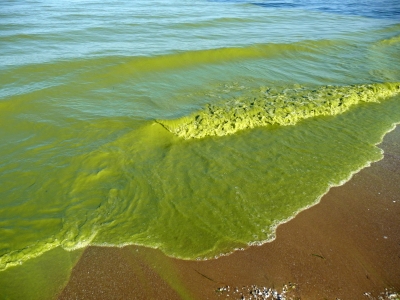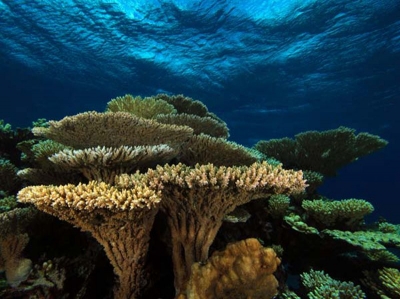WHAT IS ALGAE BLOOM?

An algae bloom, also referred to as algal bloom, corresponds to the rapid increase, overgrowth or accumulation of microscopic algae or algae-like bacteria in freshwater or marine water systems. Often recognised by the discolouration in the water caused by the algae's pigments, an algae bloom may also produce bad-smelling scum, froth, foam, or a slick that is like paint, based on the type of algae or bacteria causing it.
Algal blooms are the result of a nutrient, like nitrogen or phosphorus from various sources (for example fertilizer runoff or other forms of nutrient pollution), entering the aquatic system and causing excessive growth of algae. An algal bloom affects the whole ecosystem.
Consequences range from the benign feeding of higher trophic levels to more harmful effects like blocking sunlight from reaching other organisms, causing a depletion of oxygen levels in the water, and, depending on the organism, secreting toxins into the water. Blooms that can injure animals or the ecology, especially those blooms where toxins are secreted by the algae, are usually called "harmful algal blooms" (HAB), and can lead to fish die-offs, cities cutting off water to residents, or states having to close fisheries. The process of the oversupply of nutrients leading to algae growth and oxygen depletion is called eutrophication.
Freshwater algal blooms are the result of an excess of nutrients, particularly some phosphates. Excess nutrients may originate from fertilizers that are applied to land for agricultural or recreational purposes and may also originate from household cleaning products containing phosphorus.
A harmful algal bloom (HAB) is an algal bloom that causes negative impacts to other organisms via production of natural toxins, mechanical damage to other organisms, or by other means. The diversity of these HABs make them even harder to manage, and present many issues, especially to threatened coastal areas. HABs are often associated with large-scale marine mortality events and have been associated with various types of shellfish poisonings. Due to their negative economic and health impacts, HABs are often carefully monitored.
HAB has been proved to be harmful to humans. Humans may be exposed to toxic algae by direct consuming seafood containing toxins, swimming or other activities in water, and breathing tiny droplets in the air that contain toxins.
If the HAB event results in a high enough concentration of algae the water may become discoloured or murky, varying in colour from purple to almost pink, normally being red or green. Not all algal blooms are dense enough to cause water discolouration.
Credit : Wikipedia
Picture Credit : Google


